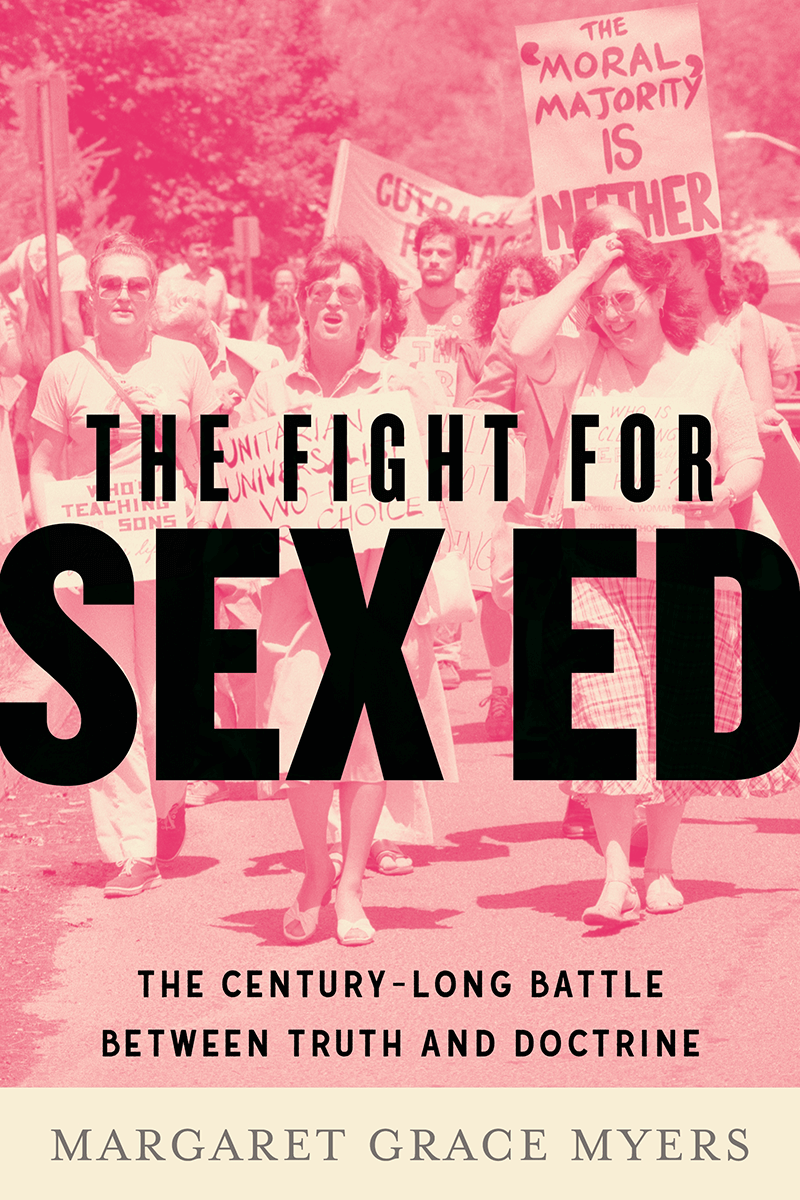
Earlier this summer, the Supreme Court ruled in favor of a group of Maryland parents who sued their school district when it wouldn’t excuse their children from lessons about homosexuality or gender identity. Writing for the majority, Justice Samuel Alito cited the book Uncle Bobby’s Wedding as one that “does not simply refer to same-sex marriage as an existing practice. Instead, it presents acceptance of same-sex marriage as a perspective that should be celebrated.” And while some in this country might agree, “other Americans wish to present a different moral message to their children,” he added. “And their ability to present that message is undermined when the exact opposite message is positively reinforced in the public school classroom at a very young age.”
Indeed, what sent this case to the high court was not the explicit nature of the books being taught or the fact that the adult concepts they contained were being introduced to very young children. This has been happening all over the country for years. Rather, it was that, for the first time in the century-old history of sex education in America, parents could not opt out of these lessons.
The clash at the heart of Mahmoud is the inevitable consequence of decades of demands by sex ed activists for ever-more explicit content in libraries and classrooms. Indeed, if there’s one thing you might take away from the partisan and often hysterical book The Fight for Sex Ed by Margaret Grace Myers, it’s that if you give sex ed advocates an inch, they will take a mile.
Myers, who describes herself as a writer, educator, and book collector, holds a master’s degree in theology. Nothing in her background lends her any particular expertise on the topic of sex ed. Nevertheless, she positions herself as a crusader for sex education against the forces of darkness: those who “want young people to remain ignorant of their bodies and sex.”

by Margaret Grace Myers
Beacon Press, 2025, $29.95, 276 pages
In Myers’s telling, the history of sex education begins in the late 19th century, when concerns were growing about the spread of venereal disease. She writes that much of this problem was blamed on prostitution, which at the time was referred to as the “social evil,” a phrase she describes as a “euphemism of the day for sex work.” In the author’s myopic worldview, the phrase “sex work,” presumably, is not a euphemism.
At any rate, readers are told that America was far behind Europe in recognizing the problem of sexually transmitted diseases—and that it was embarrassing. At the International Conference on Syphilis and Venereal Diseases in Brussels, Prince Albert Morrow, a New York physician, heard European doctors discuss the extent of the problem. “We can imagine Dr. Morrow listening as these experts reported on the rates of STIs in their countries. . . . Then he returned to the United States where there were no such data, no plans, and no measures in place to prevent infections.”
Morrow wrote that “the entire system of our educational machinery” was “organized upon a basis of silence and secrecy in regards to the reproductive function.” Myers concludes that this idea of sex as something “private” was largely an American conceit—“because the United States had been built on Christian norms that permitted sex only within marriage. These norms had been reified by laws that criminalized adultery, fornication and cohabitation.” European countries may have had a “Christian heritage,” but they were just more “pragmatic” about sex. Henry VIII, call your office.
It is true that venereal disease was a problem of increasing concern, particularly during World War I, when one report found that “STIs were the greatest cause of disability in the army.” Worries from military leaders eventually led to an effort on the part of civilian authorities to track and curb the spread of disease on the home front. But what started as an effort to stop disease morphed into something insidious: an attempt to educate children about sex so that only certain sorts of people would reproduce.
As Myers notes, “Eugenicists, creating [an] incorrect and biased hierarchy [of races], also believed that parenthood should be reserved for those who would not put a burden on society—those who had the so-called strongest genes.” The involvement of the eugenics movement in sex education represented the first instance of mission creep, with one educator saying that “to appropriate money to take care of sickly children after they come, is like locking the barn door after the horse is stolen. . . . it is the right of every child to be well born.”
EdNext in your inbox
Sign up for the EdNext Weekly newsletter, and stay up to date with the Daily Digest, delivered straight to your inbox.
Parents in one Pennsylvania town who heard that message quickly shut it down. But for Myers, this was just an omen of terrible things to come. The “incident,” she writes, “highlighted the importance of school boards: they held true power, and could either be trigger-happy or gun shy, especially when it came to controversial issues.”
In the decades that followed, the goal of those who wanted sex education taught in public school changed considerably, both in subject and scope. A survey in 1957 found that there was “some degree of teaching” about venereal diseases in 48 states. But instead of one class devoted to sex education, some states had incorporated it into physical education, others into biology or home economics or even social studies. The more classes where some form of sex education was taught, the more normalized its messages became, and the less parents were able to control the content their children learned. The lack of accountability and oversight spiraled for decades until books advancing contested claims about gender and sexuality wound up in elementary school reading lessons.

The goal of sex ed in Myers’s account also evolved from disease prevention to prevention of teen pregnancy to discussions of abortion. What started as sharing information about sexual biology morphed over time into efforts to make students feel more comfortable with their bodies, including discussions of masturbation, sexual consent, and ultimately gender dysphoria. Pedagogy shifted from answering students’ questions to explicit lectures, complete with role-playing. It was not only supporters of eugenics that took up the mantle of sex education in the first half of the 20th century but also population-control proponents who wanted to teach kids not to have too many children, lest they deplete the earth’s resources.
Most of The Fight for Sex Ed is a screed against backward Americans who have opposed sex education—Christians, Republicans, and the like. And while the side that favors the embrace of different sexual orientations, gender identities, and sex outside of marriage is portrayed as morally neutral—just offering “facts”—religious people are presented as the ones with an agenda.
Myers is also outraged by the role that conservative parents at times play in vetoing sexual content in school classrooms, echoing the words of one proponent who says that politicians have to “differentiate between real community resistance and the voices of a few cranks in the community.” She is particularly scornful of abstinence-only sex education, which she thinks “has no place in public schools,” calling it a “violation of church and state.”
And while Myers initially defends advocates of sex ed saying they believe parents have an important role in educating their kids on these issues, she eventually concludes, “I do not believe that parents are a child’s best sexuality educators.” They don’t “inherently possess information that equips them to teach about sex,” she says, just like they “are not automatically their child’s best math teacher or English teacher.” So, just to recap: When Myers is angry at earlier opponents of sex ed—from the 19th century through the Christian Coalition—she says sex ed is needed so students know how not to contract sexually transmitted diseases or get pregnant. But apparently today, there is so much information about sex to disseminate that leaving it out of schools is like letting parents teach calculus.
Myers and other sex ed advocates are always moving the goalposts. In the early 1990s my (private) high school hired a man to come offer AIDS education. It was sold to parents as prevention education. The school was not particularly religious or conservative. Parents went along with the plan for a while; they could decide whether their children would take the class. But a few months in, the man had organized a play for the school in which one character demonstrated how to put a condom on a banana, and another threw a pile of condoms up in the air and announced the many different flavors available. When the school decided to end the program, he stormed into an assembly and went on an impassioned rant against its leadership for keeping students in the dark about important topics.
The truth is that keeping kids safe from STDs and unwanted pregnancies is not that complicated. But indoctrinating them with liberal sexual ethics requires months, if not years, of lectures, books, and multimedia presentations. Many schools have decided it also requires keeping parents in the dark. Myers is deeply frustrated that Americans don’t seem to want this indoctrination. “One might be tempted to say this is an untenable situation,” she writes, lamenting the fact that many schools do not offer lessons in gender identity or prevent explicit discussions of sexual acts. “Yet it has endured for decades with no end in sight. . . . [I]t’s almost enough to make one want to give up entirely,” which she concludes, “I suspect is part of the opposition’s playbook.”
Fortunately for Myers, she is comforted by the support of her readers. “I can only hope that ‘we’—an ambiguous term I will use for those of us committed to democracy, honesty, truth, bodily autonomy, liberty and justice for all, and so on and so forth, can muster some of the same activism that Republicans on the right have for so long.”
If the partisan lens of this book and Myers’s inability to be a judicious arbiter of research had not already come through, she writes, apropos of the current educational environment, that “Face-mask mandates, which were an evidence-based way to reduce the spread of Covid-19, had been demonized by the right as a symbol of state overreach.” Almost no one on any side of the political spectrum is defending mask mandates, but Myers has thrown opposition to sex education, critical race theory, every Covid protocol, and books on gender identity into one agenda embraced only by backward conservatives like Phyllis Schlafly and Ron DeSantis. The fact that there are plenty of Democrats, mainstream liberals and non-Christians who also question some of these ideas has not crossed her mind. Tamer Mahmoud is not a Southern Baptist.
Here it’s time to take a deep breath to understand the most inconvenient truth about sex education. It doesn’t really do much. Ten years ago, New York University Professor Jonathan Zimmerman published Too Hot to Handle, a comprehensive (and global) history of sex education. His more serious (and fortunately much calmer) take is this: “No credible research has ever sustained the conservative claim that sex education makes young people more likely to engage in sex. Yet there is also scant evidence to suggest that it affects teen pregnancy or venereal disease rates.” As he notes, “scholars around the world have struggled to show any significant influence of sex education upon youth sexual behavior.”
Schools might want to ask themselves: If information were really the only obstacle to preventing disease and pregnancy, wouldn’t the internet have solved the problem by now? The truth is that even when teenagers have all the information they need, they still make dumb decisions. In one study Myers cites from 1971, never-married sexually active teens were asked why they didn’t use protection. Sixteen percent of them said it was because they wanted a child. One suspects that number would have been higher if they hadn’t been speaking to adults.
There are points in the book where Myers does acknowledge the ineffectiveness of sex ed in shaping youth behavior. Here and there she finds a small sample where such classes influenced kids in one direction or the other. But really, with so many other variables in kids’ decision-making at play, it’s hard to tell which has an impact. And the incentives for short-term decisions aren’t always the same as those over the long run.
The one thing we do know from longitudinal studies of youth is that parents are the single most influential people in children’s lives. I fear this evidence might drive Margaret Grace Myers over the edge, but a commitment to honesty and truth requires we acknowledge it.
Naomi Schaefer Riley is a senior fellow at the American Enterprise Institute and a senior fellow at the Independent Women’s Forum.
Suggested citation format:
Schaefer Riley, N. (2025). “Parents Are on the Losing Side in the Battle for Sex Education: Slanted history reveals ambitions, biases of sex ed advocates.” Education Next, 25(4), 12 August 2025


